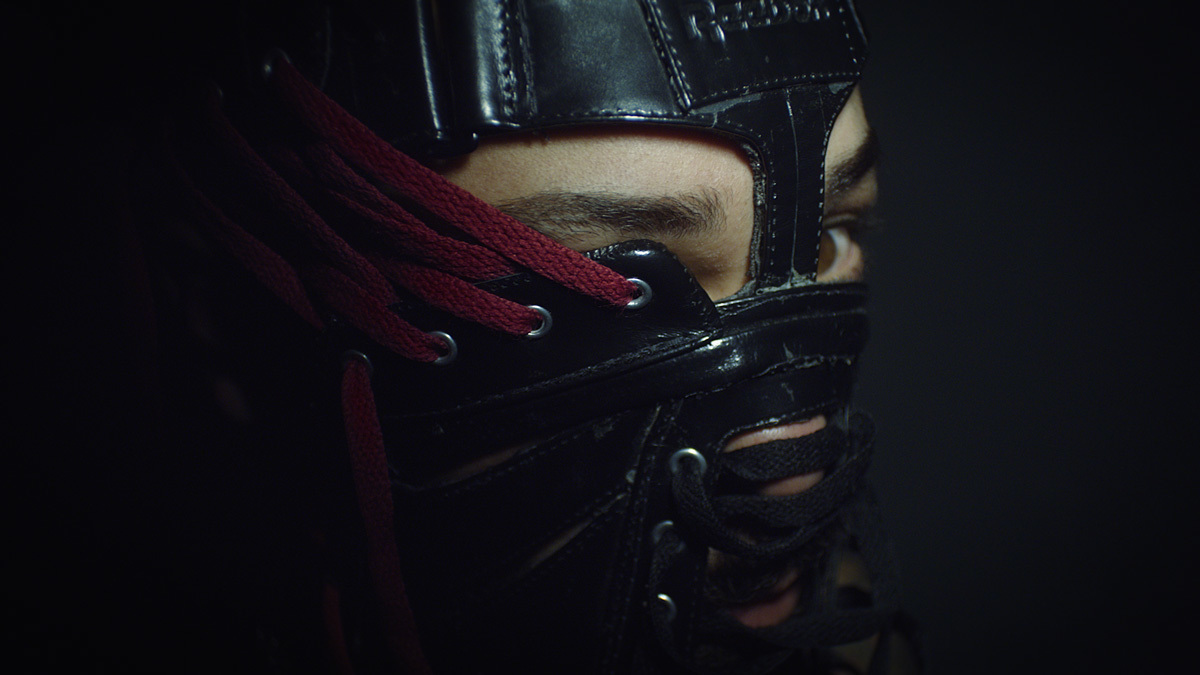A new doc from Boiler Room explores a new, nameless subgenre, a loose-knit collective of subversive, subterranean creatives who want to push the boundaries of music, art, fashion, politics and identity. With rising rents and lack of funding adding to the exclusion of our young writers, painters, designers, thinkers and poets, an alternative subculture is slowly emerging of like-minded individuals who feel increasingly pushed out, not only politically but socially too. Designers Sports Militia and Liam Hodges, musician Gaika, composer Visionist and poet James Massiah are all individually working against given convention and homogeny, and subconsciously or otherwise, connecting to other like-minded individuals to create a scene that is without name, boundary or discipline. “It’s up to us as artists to create – and curate – those support networks, those spaces in which art can flourish,” says Gaika who has worn Militia’s clothing in his videos – trainers that he essentially transforms into modern-day body armour. “As London changes, I continue to change”, says James Massiah who has collaborated with Liam Hodges several times. “We’ve got to make it differently if we want to see something different,” he notes. “For me it’s about taking the clothes people already wear, redeveloping them and putting them in a new context,” says Hodges. “Living in London is what drives these subcultures, it’s not easy to pay rent and eat; but the power of that stress is really good. You have to be hungry to survive.”
Watch Part One of Beyond a BPM, and then read what director Chris Read and creative producer Hector Aponysus noticed about the scene as they filmed the two-part short.
1. Across the different disciplines there seems to be a commonality and shared attitude.
Instead of reacting to these difficult political and social times with aggression, or anger, their frustration is being channelled into something more delicate and empathetic. There seems to be a pattern of transformation in many of the artist’s work where they have taken a genre or aesthetic previously with its own set of meaning and re-conceptualised them as their own. For example, artists taking grime and dancehall and using it to convey their struggles with mental health or gender identity.”
2. Acceptance and inclusion are very strong themes that exist in this scene.
“So many people in our film have felt excluded previously and we have seen how by coming together, they have found a growing confidence in their art and places to get it seen / heard. Essentially Part One sees artists responding to the political exclusion they feel in London and Part Two examines the social exclusion they’ve experienced. This seems to be a scene where egoism is downplayed heavily and artists are accepted on the merit of their work.”
3. Each artist shows a strong determination to create and govern their own spaces.
“This seems to stem from the feeling that mainstream channels cannot properly represent them as artists or that it leaves them at the mercy of being dropped at any point. There’s also the factor that due to lack of artistic support in London with few opportunities for funding etc., that these artists have adopted a truly DIY approach to everything they do, collaborating with each other has been a necessary tool in building their own space within London’s creative scene and ensuring its longevity.”
4. This scene could only really be birthed at this time.
“It’s a clear reaction to the creative oppression existing in the capital and also a reflection of changing perceptions of different issues amongst young people in London. It’s a heartening example of young people redefining past canons. Not only an evolution of the sounds of the late 90s and early 2000s that these people grew up with as kid,s but also an example of this generation bravely engaging with issues such as gender, sexuality, race, masculinity and politics in their work.”
5. One of the most fascinating elements of making this film for us was the process of documenting a scene before it’s even defined itself.
“For us the sounds and looks of this scene were immediately apparent and as outsiders the commonalities were clear. For the artists however they found it near impossible to define or identify, they were unanimous in their understanding that the main characteristic of this scene was the freedom of expression that existed in all their processes. What’s obvious to us that these artists are so closely linked that even if they are not collaborating directly their work is becoming more and more synthesised as they continue to produce and influence each other in the process. We’re reluctant to try and define it at this point due to the fact that currently it is so dynamic that it could still go in any direction, one thing for certain is that it will be somewhere entirely unique.”
unique.”
@chrisread and @hectoraponysus
Credits
Text Chris Read
